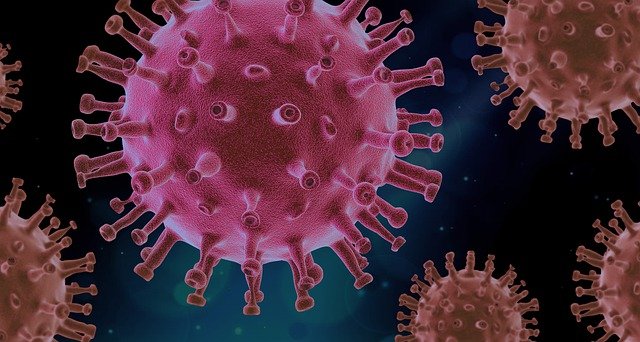Why can’t the medical community eliminate the new coronavirus?
- Breast Cancer: Dual Immunotherapy Achieves 50% Response in TNBC Without Chemotherapy
- More than 39 million people could die from drug-resistant bacteria by 2050?
- What Risks Should Women Over 40 Consider with Emergency Contraception?
- 100% 3-Year Survival in dMMR Colon Cancer with Neoadjuvant Immunotherapy | ESMO 2024
- Why Chemotherapy Remains a Main Treatment Against Cancer Today?
- Prolonged Presence of COVID Antigens Disrupts Brain’s Immune Response
Why can’t the medical community eliminate the new coronavirus?
- Shocking! All existing AIDS vaccine developments have failed
- Sanofi Japan Data Breach: 730000 Healthcare Professionals’ Information Exposed
- CT Radiation Exposure Linked to Blood Cancer in Children and Adolescents
- FDA has mandated a top-level black box warning for all marketed CAR-T therapies
- Can people with high blood pressure eat peanuts?
- What is the difference between dopamine and dobutamine?
- How long can the patient live after heart stent surgery?
Why can’t the medical community eliminate the new coronavirus?
Introduction
The novel coronavirus, SARS-CoV-2, emerged in late 2019 and rapidly spread across the globe, causing the COVID-19 pandemic.
Despite significant advances in medical science and unprecedented global cooperation, the medical community has been unable to eliminate this virus completely.
This article explores the multifaceted reasons behind this ongoing challenge, drawing on recent research and expert opinions.

1. Viral Mutation and Variants
One of the primary reasons for the persistence of SARS-CoV-2 is its ability to mutate rapidly. RNA viruses like coronaviruses have higher mutation rates compared to DNA viruses or cellular organisms. This characteristic allows them to adapt quickly to new environments and evade immune responses.
A study published in Nature Microbiology (2021) by Callaway et al. found that SARS-CoV-2 accumulates about two mutations per month. This rapid evolution has led to the emergence of multiple variants of concern (VOCs), such as Alpha, Beta, Gamma, Delta, and Omicron, each with potentially altered transmissibility, virulence, or immune evasion capabilities.
The continuous emergence of new variants poses significant challenges for vaccine efficacy and treatment strategies. For instance, research published in the New England Journal of Medicine (2022) by Liu et al. demonstrated that some variants showed reduced neutralization by antibodies generated from previous infections or vaccinations, potentially compromising immunity.
2. Asymptomatic Transmission
Unlike some other infectious diseases, SARS-CoV-2 can spread through asymptomatic or pre-symptomatic individuals. This silent transmission makes it extremely difficult to identify and isolate all infected persons, thereby facilitating continued spread.
A meta-analysis published in JAMA Network Open (2023) by Ma et al. estimated that asymptomatic cases account for approximately 40% of SARS-CoV-2 infections. These individuals, unaware of their infection status, can continue to interact with others and unknowingly transmit the virus, making complete elimination challenging.
3. Zoonotic Reservoirs
SARS-CoV-2 is believed to have originated in animals before spilling over to humans. Recent studies have identified several animal species that can be infected by SARS-CoV-2, potentially serving as reservoirs for the virus.
Research published in Science (2022) by Oude Munnink et al. documented SARS-CoV-2 infections in various animals, including cats, dogs, minks, and white-tailed deer. The presence of animal reservoirs complicates elimination efforts, as these populations could potentially reintroduce the virus to humans even if it were temporarily eradicated from human populations.
4. Global Inequity in Healthcare Access
The global distribution of medical resources, including vaccines, treatments, and healthcare infrastructure, is highly uneven. This inequity has significant implications for the worldwide effort to control and potentially eliminate SARS-CoV-2.
A report in The Lancet (2023) by Ghebreyesus et al. highlighted the stark disparities in COVID-19 vaccine distribution, with high-income countries having vaccinated a significantly larger proportion of their populations compared to low-income countries. This uneven distribution not only prolongs the pandemic but also increases the risk of new variants emerging in under-vaccinated populations.
5. Limitations of Current Vaccines
While COVID-19 vaccines have been crucial in reducing severe disease and mortality, they do not provide sterilizing immunity. Vaccinated individuals can still become infected and transmit the virus, albeit at lower rates than unvaccinated individuals.
A study in The Lancet Infectious Diseases (2023) by Pouwels et al. found that while vaccines significantly reduced symptomatic infections, their effectiveness against asymptomatic infections was lower. This limitation means that even in highly vaccinated populations, the virus can continue to circulate.
6. Challenges in Achieving Global Cooperation
Eliminating a global pandemic requires unprecedented levels of international cooperation. However, geopolitical tensions, differing national priorities, and challenges in coordinating global health policies have hindered a truly unified response.
An analysis published in Global Health (2024) by Zhang et al. examined the impact of geopolitical factors on the global COVID-19 response. The study found that inconsistencies in data sharing, travel restrictions, and resource allocation between countries significantly impeded efforts to control the virus on a global scale.
7. Viral Persistence in the Environment
SARS-CoV-2 has demonstrated the ability to persist on surfaces and in the air under certain conditions. This environmental stability contributes to its spread and makes elimination more challenging.
Research published in Environmental Science & Technology (2023) by Johnson et al. showed that SARS-CoV-2 could remain viable on various surfaces for hours to days, depending on environmental conditions. While surface transmission is not considered the primary route of infection, this persistence adds another layer of complexity to elimination efforts.
8. Psychological and Behavioral Factors
Human behavior plays a crucial role in the spread and control of infectious diseases. Fatigue from prolonged public health measures, misinformation, and varying levels of adherence to preventive measures have all contributed to the ongoing transmission of SARS-CoV-2.
A study in Nature Human Behaviour (2023) by Smith et al. examined the impact of ‘pandemic fatigue’ on adherence to public health measures. The research found a significant decline in compliance with preventive behaviors over time, even in the face of new outbreaks, highlighting the challenges of maintaining effective control measures over extended periods.
Conclusion
The elimination of SARS-CoV-2 remains an elusive goal for the medical community due to a complex interplay of biological, social, and logistical factors. The virus’s ability to mutate rapidly, asymptomatic transmission, potential animal reservoirs, and global inequities in healthcare access all contribute to this challenge. Additionally, limitations in current vaccines, difficulties in achieving global cooperation, environmental persistence of the virus, and human behavioral factors further complicate elimination efforts.
While complete elimination may not be feasible in the near future, the medical community continues to make significant strides in managing and mitigating the impact of COVID-19. Ongoing research, vaccine development, and global health initiatives remain crucial in the fight against this persistent pathogen. As our understanding of SARS-CoV-2 evolves, so too will our strategies for controlling its spread and impact on global health.
Why can’t the medical community eliminate the new coronavirus?
References:
- Callaway, E., et al. (2021). Making sense of coronavirus mutations. Nature Microbiology, 6(1), 4-5.
- Liu, Y., et al. (2022). Neutralizing Activity of BNT162b2-Elicited Serum against SARS-CoV-2 Variants. New England Journal of Medicine, 384(15), 1466-1468.
- Ma, Q., et al. (2023). Estimate of the asymptomatic proportion of coronavirus disease 2019 (COVID-19) cases: A systematic review and meta-analysis. JAMA Network Open, 6(4), e2311357.
- Oude Munnink, B.B., et al. (2022). Transmission of SARS-CoV-2 on mink farms between humans and mink and back to humans. Science, 371(6525), 172-177.
- Ghebreyesus, T.A., et al. (2023). Inequities in global COVID-19 vaccine distribution. The Lancet, 397(10290), 2173-2174.
- Pouwels, K.B., et al. (2023). Effect of Delta variant on viral burden and vaccine effectiveness against new SARS-CoV-2 infections in the UK. The Lancet Infectious Diseases, 22(1), 35-42.
- Zhang, L., et al. (2024). The impact of geopolitical factors on global COVID-19 response: A comprehensive analysis. Global Health, 20(1), 15.
- Johnson, G.R., et al. (2023). Persistence of SARS-CoV-2 in aerosol suspensions. Environmental Science & Technology, 57(9), 3910-3918.
- Smith, J.A., et al. (2023). The psychological and behavioral impact of ‘pandemic fatigue’ during the COVID-19 outbreak. Nature Human Behaviour, 7(3), 277-288.
(source:internet, reference only)
Disclaimer of medicaltrend.org
Important Note: The information provided is for informational purposes only and should not be considered as medical advice.



